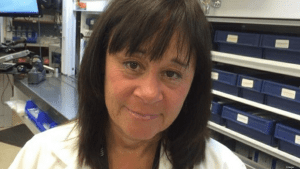
REGENXBIO Starts 2022 by Moving DMD Gene Therapy into the Clinic and Advancing AbbVie Partnership
Rare disease-focused REGENXBIO hit the ground running in 2022 with its developmental programs for Duchenne Muscular Dystrophy and wet age-related macular degeneration. The Maryland-based company received clearance from the U.S. Food and Drug Administration to initiate a first-in-human study of its gene therapy for the rare form of muscular dystrophy.
RGX-202 is a potential one-time gene therapy that is designed to deliver a transgene for a novel microdystrophin that includes the functional elements of the C-Terminal (CT) domain found in naturally occurring dystrophin. The experimental gene therapy uses the company’s proprietary NAV AAV8 vector.
REGENXBIO’s NAV Technology Platform, a proprietary adeno-associated virus gene delivery platform, consists of exclusive rights to more than 100 novel AAV vectors. The company has not yet won regulatory approval for an in-house developed gene therapy, but its platform was used in the development of Novartis’ Zolgensma, a gene therapy for spinal muscular atrophy.
REGENXBIO Chief Scientific Officer Olivier Danos expressed excitement about the clearance to begin testing RGX-202 in humans. Danos said therapeutic options are needed for treating DMD, a rare genetic disorder that is caused by mutations in the gene responsible for making dystrophin. Without that dystrophin, the muscles throughout the body become progressively weaker. Eventually, DMD patients lose their mobility and require assistance breathing before the disease leads to an early death.
The Phase 1/2 AFFINITY DUCHENNE trial is a multicenter, open-label dose-escalation and dose-expansion study designed to evaluate the safety, tolerability, and clinical efficacy of a one-time intravenous dose of RGX-202 in patients with Duchenne. The trial is expected to begin in the first half of this year starting with six ambulatory pediatric patients diagnosed with DMD.
“Our trial design follows compelling evidence from preclinical studies which demonstrated that one-time treatment with RGX-202 can express meaningful levels of a novel, functional microdystrophin protein in muscle, and showed significant improvements in muscle force and function in animal models,” Danos said in a statement. “This innovative AAV gene therapy candidate for Duchenne was developed in-house at REGENXBIO through a highly collaborative process between our expert research and manufacturing teams and we believe that RGX-202 can potentially address unmet needs for patients with Duchenne.”
The announcement of the IND clearance for RGX-202 comes almost one year after REGENXBIO Chief Executive Officer Kenneth Mills and Danos touted the potential of the gene therapy candidate, which he said could benefit all DMD patients.
In wet age-related macular degeneration (wet AMD), REGENXBIO initiated the ASCENT study, the second of two Phase 3 studies assessing the efficacy and safety of subretinal delivery of the gene therapy RGX-314. The Phase 3 study is being conducted in partnership with Illinois-based AbbVie. This study, along with the other Phase 3 ATMOSPHERE trial is expected to support a potential Biologics License Application for RGX-314 in 2024.
RGX-314 includes the NAV AAV8 vector containing a gene encoding for a monoclonal antibody fragment designed to inhibit vascular endothelial growth factor (VEGF), a protein believed to play a critical role in the formation of new blood vessels.
Wet AMD is a chronic, degenerative eye disease caused by an excess of VEGF, a protein that promotes the growth of abnormal blood vessels underneath the macula, the area of the retina responsible for sharp, central vision. Fluid that leaks out of these abnormal blood vessels disrupts the normal retinal structure and ultimately damages the macula. It is a leading cause of blindness in people over the age of 60.
The ASCENT study will evaluate subretinal delivery of RGX-314 across two-dose arms. One dose arm will see patients receive 6.4×1010 genomic copies per eye and the other will receive 1.3×1011 genomic copies per eye. The primary endpoint of the study will be to determine non-inferiority to Regeneron’s Eylea (aflibercept). After one year, the patients’ Best Corrected Visual Acuity will be measured from their baseline score. The ASCENT study is expected to include approximately 465 patients across the two-dose arms and the Eylea control arm.
Steve Pakola, chief medical officer of REGENXBIO, said the beginning of the ASCENT study is an important milestone for the subretinal delivery of RGX-314 in patients with wet AMD.
REGENXBIO and AbbVie forged a partnership for wet AMD, diabetic retinopathy and other chronic retinal diseases in November 2021. The partnership centered on RGX-314 in each of these indications. The company is eying two separate ways of administering the gene therapy, a standardized subretinal delivery procedure as well as delivery to the suprachoroidal space.
The collaboration with AbbVie could be worth up to $1.38 billion for REGENEXBIO depending on developmental and regulatory milestones.
For REGENXBIO, the advancement of these programs comes months after the company partnered with Solid Biosciences to launch the Pathway Development Consortium, a multi-stakeholder initiative that aims to identify, develop, expand and maintain pathways to effective therapies for patients diagnosed early in life with rare diseases. One of the first areas of focus for the PDC will be DMD, which affects about one in 5,000 boys per year across the globe.




